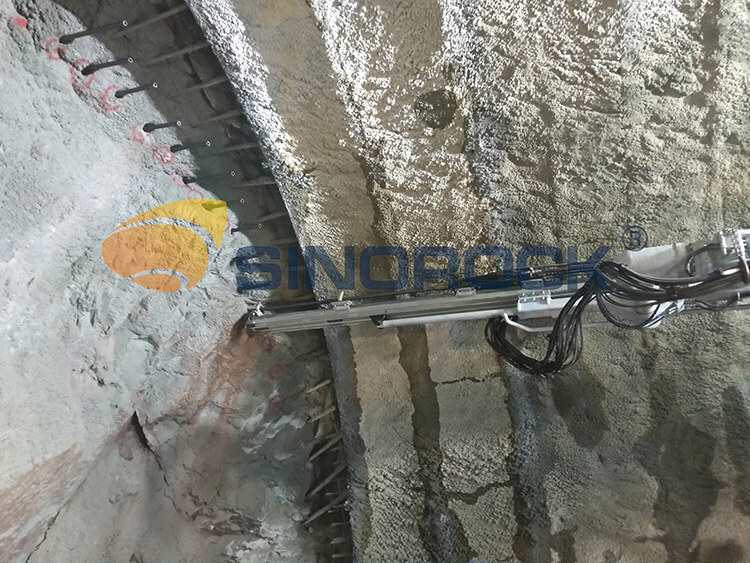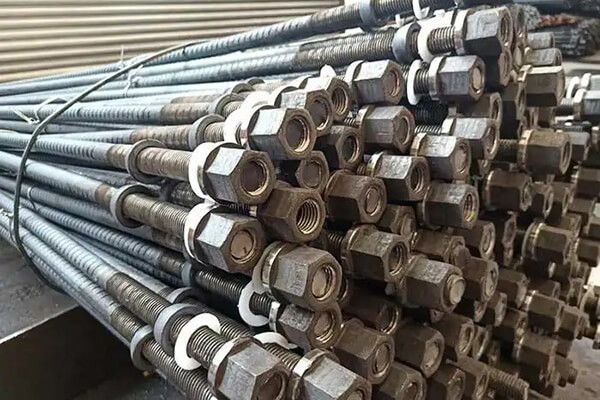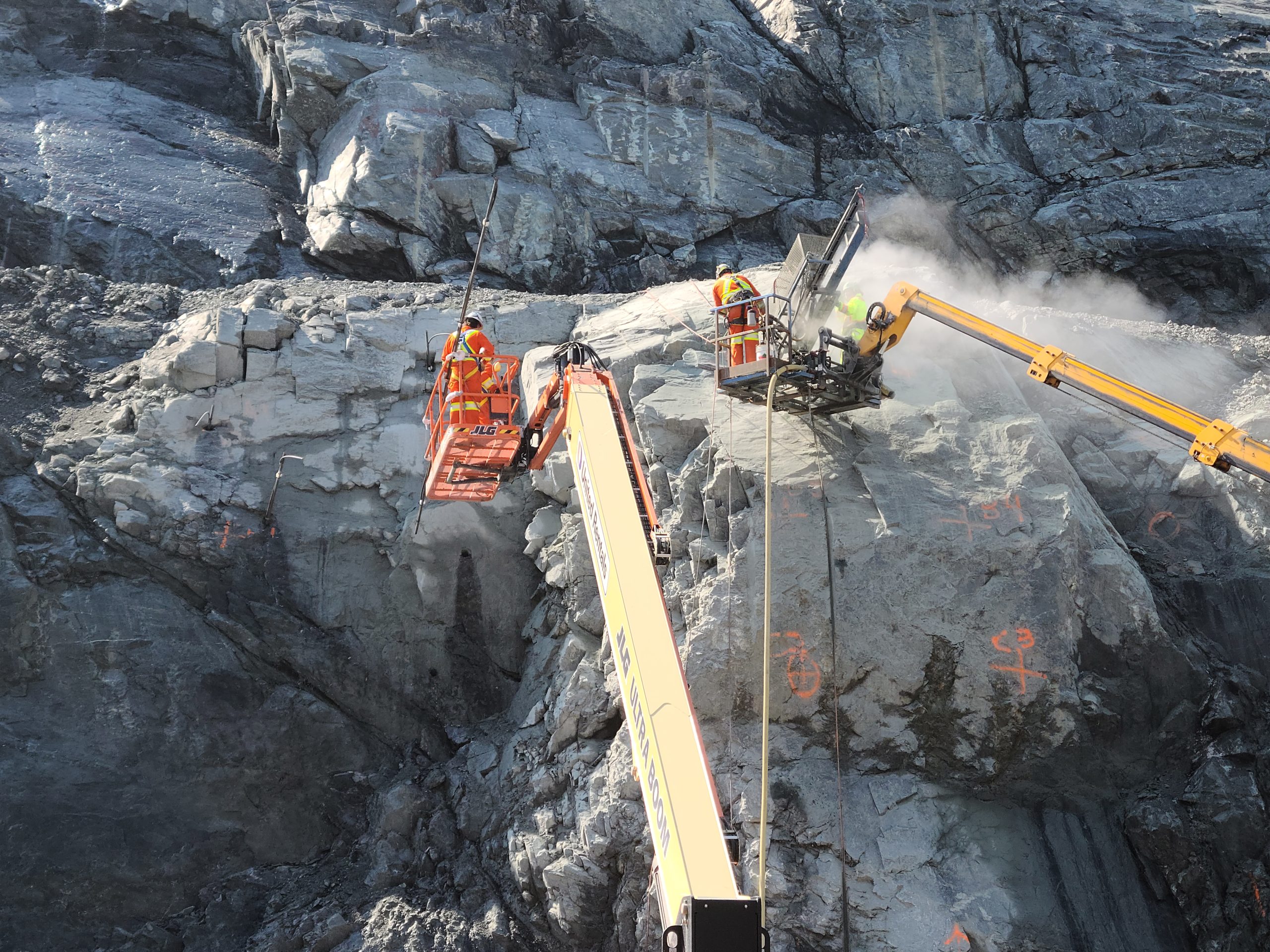Williams Anchors: Industry-Leading Anchoring Systems for Enhanced Architectural Assistance
Williams Anchors: Industry-Leading Anchoring Systems for Enhanced Architectural Assistance
Blog Article
Reliable Rock Anchors for Secure and Stable Structures
In the realm of civil design, the duty of trusted rock anchors can not be overemphasized, as they are critical in developing safe and secure and steady foundations across a variety of applications. Recognizing the different types of rock anchors, their specific applications, and the complexities of installation and upkeep is essential for enhancing their performance.
Kinds Of Rock Anchors

Easy anchors rely on the weight of the structure and the bordering dirt or rock to give resistance. Energetic supports, on the various other hand, involve the application of tension through a high-strength cable television or rod, producing a pre-stressed problem in the anchor - Williams Anchors.
Grouted supports are one more substantial group, in which a steel bar or wire is put right into a pierced opening, adhered to by a cementitious grout. As soon as cured, the cement bonds with the bordering rock, developing a durable anchoring system. Each sort of rock support uses distinctive benefits based upon the certain geological conditions and structural demands, thus playing a vital duty in the general stability and durability of built centers.
Applications in Building
Rock supports play an essential role in numerous building and construction applications, offering important support and security in diverse environments. These ingenious solutions are made use of in projects varying from massive framework advancements to smaller sized property frameworks. Among the key applications of rock anchors is in the stablizing of slopes and keeping walls, where they help avoid dirt disintegration and maintain architectural stability.
Additionally, rock anchors are important in safeguarding structures for bridges, tunnels, and skyscrapers, guaranteeing they can withstand side pressures such as wind and seismic activity. Their adaptability allows for installation in challenging geological problems, making them optimal for tasks in mountainous or rough surfaces.

Trick Choice Requirements
Choosing the appropriate rock anchor for a certain application needs cautious factor to consider of a number of vital criteria. Firstly, the geological problems of the website should be extensively assessed. Understanding rock type, toughness, and security is important to make sure that the support will certainly perform properly under lots problems.

An additional important element is the corrosion resistance of the support products. In environments revealed to wetness or chemicals, making use of corrosion-resistant products home will lengthen the life-span of the anchors and maintain structural stability over time.
In addition, the anchor's installment method ought to straighten with the job's demands and constraints. Relieve of installment, along with the prospective effect on surrounding frameworks, must be thought about.
Installment Techniques
Effective installment strategies are essential for the effective efficiency of rock anchors. Appropriate installation guarantees that the anchors achieve the wanted load-bearing ability and stability within the geological problems. The very first step in the setup procedure entails website analysis, where geological surveys figure out the rock kind, problem, and any possible obstacles.
As soon as the website is reviewed, go to website the proper exploration technique need to be picked-- options consist of rotating boring, ruby boring, or percussion exploration. The option relies on rock solidity and ecological factors to consider. Accurate boring deepness and angle are essential to guarantee that the anchors align with architectural demands and load distribution.
After drilling, the following stage involves cleaning up the borehole to get rid of debris, which can jeopardize bond toughness. Following this, the support is inserted, and if needed, a cement or material is injected to improve attachment. The curing time of these materials should be followed, making certain that the supports accomplish full toughness before any kind of lots is applied.
Upkeep and Examination
Proper upkeep and inspection of rock supports are necessary to guarantee their long-lasting efficiency and reliability (Williams Anchors). Routine assessments assist determine any type of prospective problems, such as deterioration, displacement, or structural exhaustion that could compromise the honesty of the anchoring system
Routine examinations should be conducted at specified intervals, thinking about ecological aspects and the details application of the rock supports. Aesthetic assessments need to concentrate on the subjected sections of the supports, looking for indicators of rust, splits, or other abnormalities. Additionally, it is dig this vital to examine the bordering geological problems to detect any shifts in soil or rock that may affect anchor performance.
In many cases, even more sophisticated techniques such as tons testing or non-destructive screening may be warranted to establish the anchors' load-bearing ability and total health and wellness. Correct paperwork of assessment findings, upkeep tasks, and any repair work or replacements performed is crucial for continuous evaluation and compliance with market standards.
Verdict
Finally, trustworthy rock supports play a vital duty in guaranteeing safe and secure and stable foundations across various building applications. By efficiently moving tons and boosting stability versus lateral pressures, these supports contribute substantially to the durability and honesty of structures such as bridges, tunnels, and maintaining walls. Strategic option, setup, and maintenance of rock anchors are crucial for optimizing performance and guarding public safety, eventually emphasizing their relevance in modern-day engineering practices.
Report this page